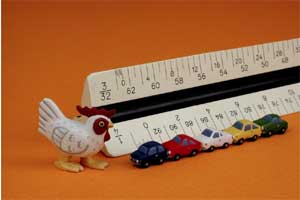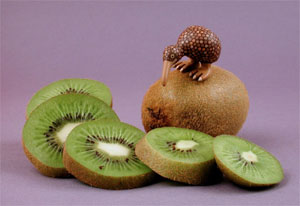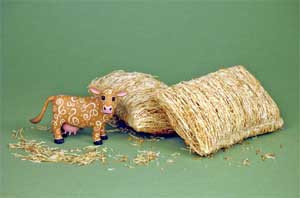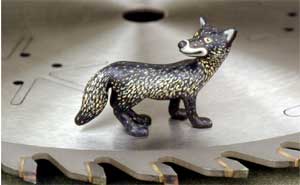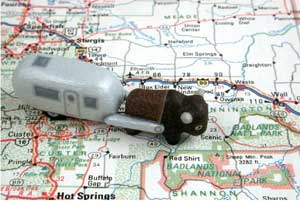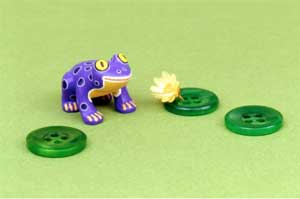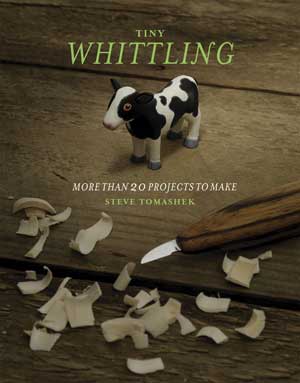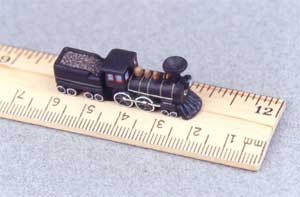
While growing up as the youngest of seven children, Steve Tomashek “always looked at my eldest brother as ‘the artist,’ so, while I was always creative, I didn’t think much of it. It was nothing out of the ordinary in our household.” His dad’s basement workshop, for example, was filled with tools for building furniture and carving decoys, and, in his retirement, Steve’s dad is still making stainless steel sculpture.
When Steve was in college at Indiana University (studying world history and education), however, that family home burned down — taking with it Steve’s grandfather’s woodworking tools and the collection of mini tanks and ships Steve had built for historical gaming. “As a way of dealing with the loss, I bought a knife and carved myself a chess set,” he said. “That was in 1993. I’ve been a daily carver since.”
He gravitated toward small carvings for a couple of reasons, including “it was cheaper than large-scale sculpture” — important to someone on a student’s budget — and his belief that being able to complete a carving in 15 minutes increased his learning curve. “People always tell me that I must have the patience of Job, but it actually takes more patience to work on larger pieces; they usually take longer.” In fact, he said, he finds working on tiny pieces to be meditative, rather than tedious.
Most of Steve’s carvings are done in basswood, with the smallest, most detailed figures done in Swiss pear or boxwood. He’s also used ebony, ivory, snakewood, tague nut, cherry pits, walnut, butternut, yellow cedar, bristlecone pine, maple, birch, holly, almond and more — but basswood is “cheap, plentiful and predictable,” he said. “For me, it is less about the wood than the object I want to make. I tell people that I want my wood to be boring, not getting in the way of the task at hand.”
Steve also intentionally keeps his “studio” small enough to fit into a cigar box. (Currently, Steve and his studio are based in Germany.) Although he has a larger collection of David Lyons knives, he says he really only needs two. “I’ve kept it this way from the beginning, with the thought that I might survive for a couple months with just what I could fit in a rucksack.” He does prefer carving with a knife, but also has a couple of gouges and some Swiss needle files for detail work.
He has also made an effort to make sure that his work didn’t fall into the category of the good carvings he had seen “that were wrecked by sloppy painting.” The steps he took to avoid such a fate have included sanding his carvings as smooth as possible, then painting them with thickly applied acrylics. That has, however, sometimes resulted in his work being mistaken for clay. “More recently, I’ve been leaving some of my carvings unsanded and even unpainted so that, even on first glance, my audience can see they are made of wood,” Steve said.
Steve’s audience has also enjoyed many of the photographs of his work along with objects to show scale, an idea first suggested by woodworker and photographer Glenn Gordon, with whom Steve has worked closely since the late 1990s. The “visual one-liners” in the photographs proved to be a humorous narrative and led to a market for selling photographs of the carvings, as well as the works themselves. As he began selling the images in a variety of formats, “my sales increased and stabilized,” Steve said. “No longer was I living hand to mouth; I could say, ‘I have survived.'”
With his greater financial security these days, Steve finds himself freer to do more speculative work, including taking new directions with stop-motion animation and complex groupings of creatures.
The original inspirations for much of his work, however, still comes from interactions with others: “the mystery of meeting someone for the first time and finding a cherished bond there.”
For example, one of Steve’s pieces is a carved cat covered in hearts, photographed sitting on a pile of sugar cubes. “The piece originated from a conversation I had with an expat woodworker living in Costa Rica, Barry Biesanz, who I met in my travels. His family ran the limestone quarry in the town I was born, so when I went to Costa Rica, I looked him up and traded my work for the chance to stay at a private beach where he owns a cabin. He related a comment from a gallery owner who claimed that if you wanted to sell anything in their gallery, it should have either a cat or a heart on it. In time, that advice turned into a joke: ‘the Hearts and Cats Movement,’ which, when spoken with a Scottish accent, sounds like ‘the Arts and Crafts Movement.'”
Other favorite pieces include an Airstream trailer pulled by a bison and a “purple frog formerly known as prince.” (Steve, like a well-known musical artist, is a native of Minnesota.)
One of Steve’s latest projects is his book, Tiny Whittling, published this month by Chicago Review Press from IPG (Independent Publishers Group) (ISBN 978-1-61374-496-3). It includes an overview of tools, sandpaper and paints, advice on choosing supplies, basic carving techniques, and projects for beginner, intermediate and advanced carvers. Part of Steve’s advice in Tiny Whittling, repeated on his website, is that the traditional beginner’s step of soap carving is not a good introduction to wood. Root vegetables, he says, are better material for getting used to grain — and he’s included in his book such carving projects as a Carrot Rabbit.
With such projects as part of his menagerie, Steve said, “I sometimes call myself a professional whittler rather than a woodcarver. It is actually an artificial distinction, ‘whittler’ being a more folksy and colorful title.”
